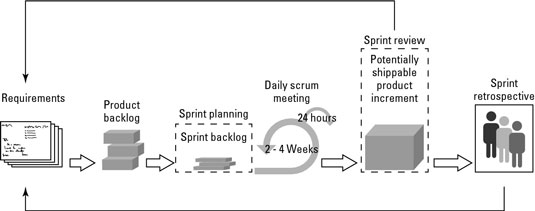Outsourcing software development is becoming more and more prevalent for both large corporations and startups alike. Outsourcing offers a range of positives in terms of both cost and convenience and can be the way in which you get your project realized in the most efficient manner possible. While the advantages are numerous, what you may make up in cost and convenience, you may lose in a sense of a control. As a result, learning how to keep your outsourced developers on track is a crucial part of any successful venture into software development outsourcing.
Thankfully, there are tried and tested ways to approach this that will allow you to get the most out of your relationship with your developers.
Let’s take a closer look.
How to Keep Your Outsourced Developers on Track
While no two working relationships are alike, there are core principles that you can follow to ensure that you have a productive experience with software development outsourcing. We’ve outlined these key areas of focus here:
1. Use Agile development methodology
Agile methodology is an orientation to software development that prioritizes an iterative approach that is as comprehensive as it is collaborative. An entry point into both project management and technical elements alike, this perspective calls for flexibility, meaningful interaction within both internal teams and client/developer relations, and a consistent focus on continual amelioration.
Where did this methodology come from? Well, like all good things, a ski lodge.
The brainchild of a meeting of software development minds gathered in the Wasatch mountains of Utah. The Agile Development Manifesto sought to provide the tenets for a dynamic approach to software development that centers human input as the core resource in the software development process. In their manifesto, the self-termed “Agilites” prioritize collaboration, interaction, dynamism, and responsivity.
So what does this mean for your project? If you would like to foster a relationship with your developers that will not only bring about the best outcome, but also ensure that the working relationship will be one that doesn’t leave you tearing your hair out, embracing this mode of collaborating effectively will go a long way.
One of the most talked about frameworks of Agile software development is the SCRUM sprint. If this is new terminology, not to worry—it’s here to make your life easier, not harder. In a nutshell, this involves breaking down the project’s requirements, defining what is needed for each block (or, in the words of SCRUM: in this SPRINT) and then, through a review process, making sure that each sprint happens the way it’s needed to.
Have a look at the diagram below:

By following this methodology, you will encourage a relationship with your developers where you can deal with issues as they arise—rather than wait for them to become disasters—as well as promptly identify areas for growth.
Software development is by no means a one-size-fits-all endeavor. If you are looking for the best possible way to ensure that the outcomes of your project are as unique as your idea was, you have to ensure that the lines of communication remain more than open with your developers. Following this approach to outsourcing software development is the best way to do so.
2. Use project management software like Asana, Trello, or Jira
One of the greatest challenges of keeping your software developers on track is location. You are often not in the same city and, even if you are, are more than likely not working from the same office.
Luckily, software solutions have stepped in to help out with this very issue.
When it comes to software development outsourcing, we now have so many project management tools at our disposal that can assist with keeping your developers on track. Our advice? Take advantage of these.
The benefits of using project management software for outsourcing development include:
-
Providing containment areas for all the elements of your project so that you can revisit them whenever you need to. See this as anything from a library catalogue to a pinboard of ideas—but however you do, know that you have place where you can stash the wisdom of your project.
-
Logging updates on work completed. You will quickly be able to see what has been done and what still needs to be done. This information will be shared with your team so that everyone is on the same page.
-
Accessing your project from wherever you are. Online platforms allow you to work remotely while still creating a node point for your interactions.
Try Asana, Trello, or Jira to see which of these platforms feels most appropriate for you and your journey with outsourcing software development.
3. Don’t continually keep moving the goalpost when outsourcing software development
While hard to admit, sometimes the problem is actually with you and not your developers. If you are constantly changing what you expect from your developers, they will be unable to deliver their best results.
Remember those SCRUM sprints we discussed? The last thing you want to do is frequently change the requirements when your developers are already in the middle of a sprint. This has the potential to not only bring strain to your working relationship, but also to send your project into chaos.
To avoid this, make sure that you spend the time and energy outlining your requirements to begin with. Of course, things are going to change slightly along the way, but the more clearly you can define your needs from the outset, the greater the chance they will come to fruition.
Parting Thoughts
While software development may seem like a technical process, the human element is central to its success. Learning how to work with your developers is at the heart of whether or not your project will see the light of day. Forming a working framework for this means winning half the battle.


